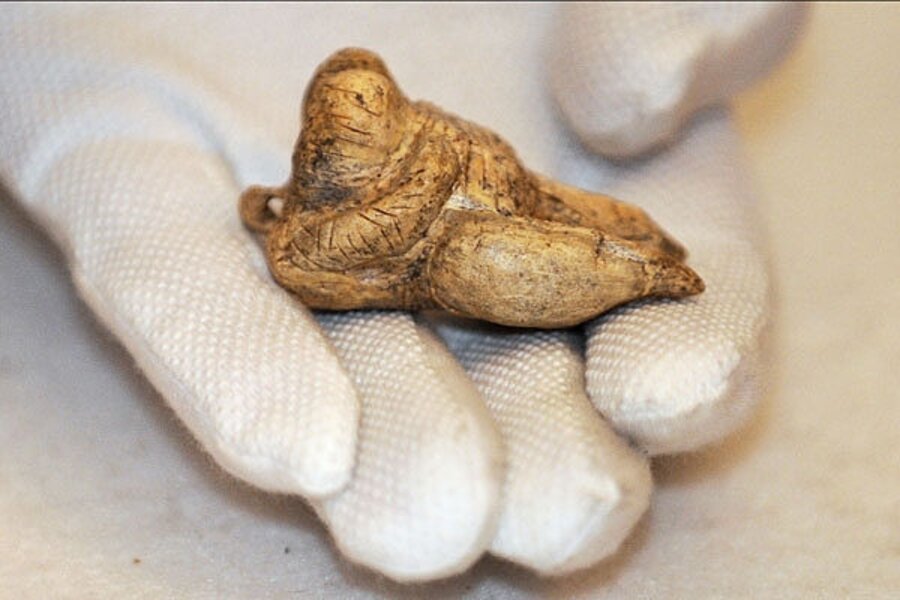Ivory femme fatale redraws timeline for early Stone Age art
Loading...
Hey, Yogi! The, er, physically ample female may have in fact vocalized -- at least when it comes to early Stone Age art.
Scientists in Europe have uncovered a female form carved from ivory, and say it's the oldest figurine of a human ever found. The researchers say it's at least 5,000 years older than the previous record-holders, which range from 25,000 and 29,000 years old, give or take.
The statuette stands just over 2-1/4 inches tall, and sports a small carved loop where a head would be. The loop is polished, as if the carving had been worn on a leather thong or thick thread. You can find a summary of the formal scientific results, which appear in this week's issue of Nature, here.
Nicholas Conard, an archaeologist at the University of Tübingen in Germany, assembled the figurine from six segments he uncovered at a dig in Hohle Fels Cave in Germany. The cave is in Germany's Schwabian region, not far from the Danube Valley.
To Dr. Conard, the find demands a major overhaul of conventional wisdom regarding the origins of art during this period, as modern humans replaced Neanderthals on the continent. He points out that until now, the art objects from this region of Germany during this early period have consisted of small animal figures and some animal-human hybrids. Representations of human females were thought to come much later.
The valley is thought to be the main migration route humans followed as they spread from Africa into Western and Central Europe, according to Paul Mellars, an anthropologist who splits his time between Cambridge University in Britain and Stony Brook University on New York state's Long Island.
Paleolithic art gallery
He points out that during the past 70 years, researchers have uncovered a "veritable art gallery" dating to about the same age as this latest find, which is estimated to be 35,000 years old. The gallery includes the small figurines Conard mentions -- typically animals ranging from mammoths and horses to cave lions, all carved from mammoth ivory.
Other indications show that the first modern humans to enter Europe had an artistic bent in the form of beads and the oldest unambiguous musical instruments -- small flutes crafted from a combination of wing bones from birds and mammoth ivory.
Europe as world's first school of sculpture?
So far, no one has found objects like the new female figurine older than 30,000 years anywhere else. And, as with any art, the young turks frequently initially borrow from the masters. Younger examples of female figurines, such as the Venus of Willendorf, share many of the same exaggerated physical characteristics that the Hohle Fels Cave figurine exhibits.
If the Europe-first analysis holds against any additional finds that may come along elsewhere, the challenge researchers now face is trying to explain what Dr. Mellars calls a symbolic explosion in this region and at this time in human evolution. One hotly debate notion: This explosion could have come through an evolutionary shift in anatomically modern humans' capacity for complex thought, and could be tied to a similar shift toward more-complex languages, Mellars notes.





